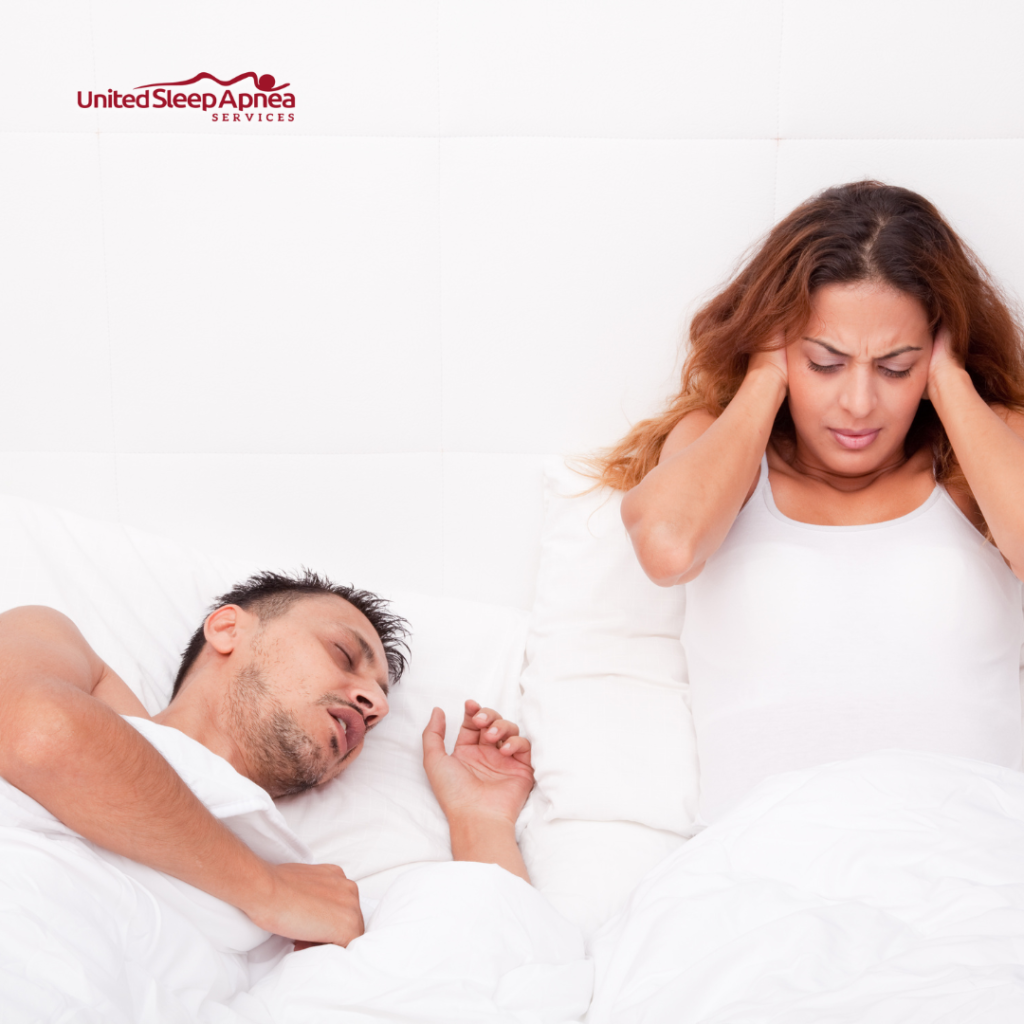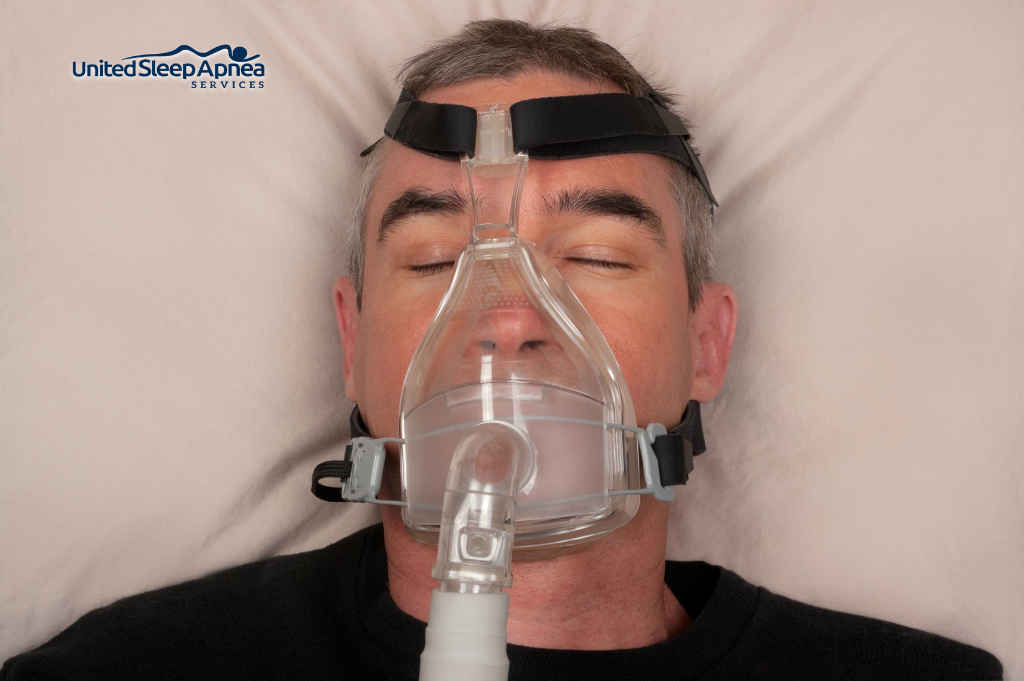Sleep apnea is a sleep-related severe breathing disorder in which breathing is interrupted during sleep. Patients with this sleep disorder experience repeated episodes of apnea where the breathing stops for a short period during sleep and repeatedly happens several times during the night.
When the breathing starts again, the patient may take a deep breath, snort, or wake up entirely with a sensation of choking, gasping, or smothering.
Sleep apnea is distinguishable by loud snoring, tiredness, and feeling sleepy throughout the day, even after a whole night’s sleep.
3 Types of sleep apnea
OSA is the most common type of apnea. OSA occurs because of partial or complete airway blockage during sleep. During an episode of OSA, the chest muscles and diaphragm have to work harder to unblock the blocked airway. Usually, the breathing resumes after a jerk of the body or a loud gasp.
In Central Sleep Apnea (CSA), the airway works as usual, but the brain fails to transmit the signals to the muscle to breathe. Apnea happens due to instability in the respiratory control system.
Complex sleep apnea syndrome or treatment-emergent central sleep apnea occurs when a patient shows both OSA and CSA.
What are the symptoms of sleep apnea
The symptoms and signs of OSA and CSA often overlap, making it difficult to differentiate between them. The most common symptoms of sleep apnea are:
- Loud snoring
- Gasping or choking during sleep
- Episodes of stopped breathing during sleep
- Morning headache
- Dry mouth upon awakening
- Difficulty falling asleep
- Excessive sleepiness during daytime (Hypersomnia)
- Cognitive impairment

Causes of sleep apnea
- Obstructive sleep apnea
Obstructive sleep apnea appears when the muscles in the throat relax. These throat muscles support the palate, a triangular tissue hanging from the uvula, the sidewalls of the throat, tongue, and tonsils.
When the throat muscle relaxes, the airway closes or narrows, depriving the person of enough air. The lack of air in the lungs then lowers the blood oxygen levels in the body. And when the brain senses the inability to breathe, it rouses the person from sleep to reopen the airway.
The awakening is usually so brief that it goes unnoticed. The person, however, might gasp, snort, or choke. This process may repeat itself several times each night, making it unable to reach a deep, restful sleep phase.
- Central sleep apnea
This type of sleep apnea occurs when the brain fails to transmit breathing signals to the muscles. This means a person with central sleep apnea will make no effort to breathe until the signal resumes. The person will awaken with shortness of breath or have difficulty staying or falling asleep.
Various medical conditions or factors may cause sleep apnea. They include:
- Nasal congestion
- Lax muscles in the throat and mouth
- Thickened tissues around the airway
- A neurological problem resulting from obesity, allergy, heart disease, kidney failure, swollen tonsils, thyroid, or genetic factors
If sleep apnea is left untreated, it can cause several chronic medical conditions, including high blood pressure, stroke, diabetes, cardiomyopathy, heart failure, and heart attack. It can also cause cognitive impairment, impacting work and academic performance and putting a patient at high risk of work-related and road accidents.
how to diagnose sleep apnea
Diagnosis of sleep apnea is based on symptoms and sleep history provided by someone who shares the bed with the patient. Sleep specialists usually perform a sleep study to diagnose sleep disorders.
For diagnosing sleep apnea, doctors choose one of the following:
During this test, a piece of equipment is used that monitors the brain, heart, and lung activities of an individual during sleep. It also measures blood oxygen levels, arm, and leg movement, breathing patterns, and sleep quality.
The home sleep test is a piece of innovative and simplified equipment that anyone can use to diagnose sleep apnea in the comfort of their home. The equipment will measure blood oxygen level, heart rate, and breathing patterns to detect irregularities and disorders.
If any of these diagnosing methods results are abnormal, the doctor may advise the person for therapy without testing. If the test shows obstructive sleep apnea, the doctor may advise the patient to visit an ENT doctor to remove the blockage in the throat or nose.
In addition, an evaluation by a neurologist and cardiologist may be necessary to evaluate the causes and comorbidities of sleep apnea.

ARE YOU MISSING OUT ON THE MOST RESTORATIVE SLEEP OF YOUR LIFE?
Reduce your daytime fatigue with the latest diagnostic testing and physician services for improved health.
Our team of experts will listen to your concerns, guide you through the process, and answer all your questions.
How can Sleep Apnea cause Other Comorbidities
Sleep apnea may lead to chronic medical conditions, including obesity, hypertension, diabetes, encephalic and cardiac alterations, and cognitive impairment. The role of comorbidities in sleep apnea patients is rising, and new conditions are growing. These comorbidities may increase the mortality risk among patients compared to the general population.
The significant comorbidities of sleep apnea are:

- Heart Failure
Cardiovascular diseases (CVD) are closely associated with comorbidities of sleep apnea.
CVD is the most frequently seen health condition in patients with sleep-related breathing disorders.
According to a study published in the American Journal of Cardiology, sleep apnea patients often have elevated blood pressure. This sleep disorder also causes a risk to cardiac output, resulting in the pathogenesis of heart failure.
- Arrhythmias
Arrhythmias, especially atrial fibrillation, are common in patients with obstructive sleep apnea. According to reports, the incidence of sudden death by cardiac arrest is higher during sleep in patients with OSA.
- Cerebrovascular disease
Sleep apnea symptoms are common in stroke and transient ischemic attack patients. The study published in Expert Review of Cardiovascular Therapy showed that sleep apnea is an independent risk factor for a transient ischemic attack, stroke, and all-cause mortality.
Patients with stroke or transient ischemic attacks are now being screened for sleep apnea. Continuous Positive Airway Pressure (CPAP) treatment may help prevent subsequent CVD and improve neurologic outcomes for patients with OSA and stroke.
- Diabetes
Sleep apnea and diabetes are long associated with each other. According to a study published in CHEST Journal, most patients with type-2 diabetes also have symptoms of sleep apnea. The study also warned that the connection between the two shows that obstructive sleep apnea is a significant risk factor for heart-related diseases and mortality.
- Cancer
A study published in the American Journal of Respiratory and Critical Care Medicine associated snoring and sleep-related breathing disorder with an increased risk of cancer development. The results from tracking 1,500 people for 22 years showed that mild snoring or sleep-related breathing disorders are associated with increased cancer risk.
- Asthma
OSA and asthma are highly prevalent disorders often associated with each other. Sleep apnea symptoms are frequent in patients with asthma who face daytime sleepiness and reduced quality of life. A study also showed that asthma could increase the risk of the pathogenesis of obstructive sleep apnea. OSA is more common in patients with asthma than in the general population, resulting in a higher frequency of exacerbating asthma. Patients with mild to moderate sleep apnea may face asthma that could be difficult to treat, while asthmatic patients showed poor sleep quality, daytime sleepiness, and increased Apnea-hypopnea (AHI).
Note that the above list is not exhaustive: the list of comorbidities of sleep apnea includes several other medical conditions. Sleep apnea comorbidities are frequent, and sleep apnea can be considered a potential trigger in worsening the prognosis of chronic diseases.

ARE YOU OR YOUR LOVED ONES AFFECTED BY SLEEP APNEA?
Our process is designed using a patient-centered, holistic curative model that focuses on lowering costs while improving outcomes.
We serve veterans, minorities, families, and those who can't get tests done at other facilities
Cost of Sleep Apnea
The cost of health care can be challenging to estimate. With the insurance and medical bills for treatment, making a prediction on the cost of treatment for any disease or disorder can be a complex process.
What would be the cost of diagnosing and treating sleep apnea?
The cost would vary depending on diagnosing sleep apnea and its treatment, including oral appliance, Continuous Positive Airway Pressure (CPAP), and surgery.
The sleep apnea cost would depend mainly on the prescribed treatment option and the insurance provider. Diagnosing the sleep disorder starts from $1,000, and a sleep apnea testing device is usually available for $1,800.
For the treatment, surgical intervention may cost as much as $10,000. However, one must work with the insurance provider to get maximum coverage and reduce out-of-pocket expenses.
When sleep apnea is left untreated, the symptoms may worsen and lead to severe comorbidities, including high blood pressure, cardiovascular diseases, diabetes, obesity, stroke, hypertension, and cancer. Hence, early sleep apnea treatment is a wise investment to prevent health and financial losses.
Cost of Sleep Study
For diagnosing sleep apnea, the first step is polysomnography or overnight sleep study. The cost of these overnight diagnostics can range from $1,000-$3,000, depending on where the test takes place. Most medical laboratories add the cost of consultation and facilities to the medical bill. Keep in mind that insurance providers only cover the cost of polysomnography.
Cost of Treatment
Medical practitioners may prescribe different treatment options for treating sleep apnea, and the cost of treatment would depend on the treatment method.
- Continuous Positive Airway Pressure
Continuous Positive Airway Pressure (CPAP) is the most common and most effective method for treating sleep apnea. The device includes a mask covering the nose and mouth that provides a stream of air during sleep to help keep the breathing airway open.
CPAP devices can cost about $3,000 and would require replacement or maintenance. Some insurance providers cover the cost of the device if it is considered necessary. However, insurance cover would not include the additional replacement or maintenance cost.
- Surgical Treatment
Surgical treatment, often used for tightening excessive tissue, would cost from $6,000 to $10,000. The cost of surgery also depends on insurance coverage and hospital fee.
- Oral Appliance
An oral appliance is recommended for those sleep apnea patients who don’t benefit from CPAP. It is a dental device that patients wear during sleep to position the tongue and lower jaw to open the airway.
Oral appliances involving a mouth guard used in sleep apnea treatment can cost $100 to $2,000; most insurance policies cover this cost. The therapy includes dental visits, mouthpieces, and adjustments and modifications to the oral device.
Cost of Untreated Sleep apnea
Medical expenses can quickly drain out your pocket. When sleep apnea is left untreated, the symptoms and effects associated with sleep apnea may worsen and affect the quality of life. And can also result in a loss of productivity. The healthcare expenses associated with untreated sleep apnea can add to the medical bills as the sleep disorder may cause chronic medical conditions. The cost of treating these medical conditions can be challenging to evaluate. Hence, early sleep apnea treatment can be an investment for better health, wealth, and quality of life.
We offer a highly reliable and affordable plan to help our patients get rid of sleep apnea and prevent the condition from worsening and causing effects on your heart and mind. So, you can get a sound, quality sleep every night you go to bed.


